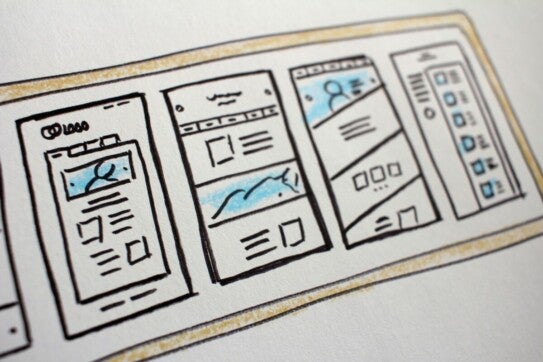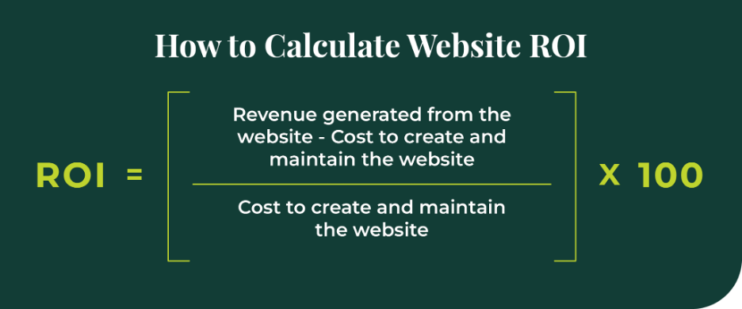How to Increase the ROI of Your Nonprofit’s Website

Using your nonprofit’s resources wisely over time is key to your long-term fundraising success and ability to achieve your mission. That’s why increasing your return on investment (ROI) in all areas of your operations is critical, especially for your nonprofit’s website.
Your website is the foundation of your online fundraising presence. It’s the resource that interested individuals will first turn to to learn how they can show support for your cause.
With that in mind, let’s explore key tips to understand and increase your nonprofit website’s ROI.
How to calculate your website’s ROI
To effectively determine how to increase your website’s ROI, you must understand where you’re starting from. Use this calculation to determine your current website ROI:

- Revenue generated from the website – Cost to create and maintain the website / Cost to create and maintain the website x 100
Several expenses play into the total cost of running your website, including web developer/designer fees, website hosting costs, and maintenance expenses.
Additionally, you may have multiple revenue streams that feed into your total website revenue, such as online donations, monthly giving programs, merchandise sales, event tickets, and other online store purchases.
The question you want to answer is, do your website’s revenue streams offset the costs needed to set up and maintain it? Evaluate your website’s revenue and costs holistically to determine the current return on various investments made to build and improve the site.
Factors that impact website ROI
The fundraising value you derive from your website isn’t the only factor impacting your ROI. The following website elements also play into how your audience views and interacts with your website:
- Scalability
- SEO presence
- User experience
- Accessibility
- Ongoing maintenance
Each of these factors can make or break your website’s profitability. Let’s explore ways to enhance these features to create a better online experience that drives ROI.
Ways to increase your nonprofit website’s ROI
Use a flexible CMS that promotes scalability.
Your content management system (CMS) should provide a user-friendly interface and flexible platform for building and growing your website over time. Prioritizing scalability ensures your website can handle heavy traffic and many e-commerce transactions while maintaining data security.
Action steps to take today:
Ensure your website is built on the right CMS for your needs, or consider switching to a platform with expanded functionality. For example, established, powerful platforms like WordPress and Drupal offer the following advantages for enhancing scalability:
- Flexible backend editor for adding content and media elements
- Plugins or modules to extend functionality
- The ability to handle traffic spikes through caching and load balancing
Before switching, consider whether you can get more from your current platform. For example, if you’re currently using Drupal, perhaps there is a custom module or new theme you could use that will better serve your website goals. Work with a web developer to get advice or build custom functionality that better serves your needs.
Enhance SEO visibility.
Search engine optimization (SEO) is the process of updating your website’s content to increase its chances of appearing higher on search engine results pages. Generally, sites that rank higher on search engines receive greater numbers of visitors—and more website visitors means more potential online donors for your nonprofit.
Action steps to take today:
Take these basic steps to update your SEO approach:
- Optimize your content for keywords. For example, if your nonprofit helps provide food for families in need in your community, you could create an educational blog post targeting the keyword “donate to a local food bank.”
- Ensure content is accurate, comprehensive, and related to your expertise. Robust, accurate content written from a place of evident expertise is more likely to rank highly on search engines. Interview subject matter experts (SMEs) as needed when drafting blog content to ensure your content relies on accurate information.
- Offer an equally positive desktop and mobile experience. Search engines prioritize reviewing the mobile version of websites to understand their content. Enhance your site’s mobile-friendliness by using large fonts and carefully-spaced buttons.
To understand your performance, track SEO rankings for keywords important to your nonprofit, as well as click-through rates and conversion rates from SEO leads. It can take a few weeks to months to see positive SEO results, so don’t be discouraged if your content doesn’t take off immediately.
Optimize the user journey.
The user journey involves your website visitors’ interactions with your site and how they use different site elements to complete their intended actions. It encompasses everything from links they click to forms they fill out and videos they watch.
Action steps to take today:
Creating a streamlined, logical user journey for every type of website user is essential to providing a better experience for all visitors. Update your user journeys by taking these steps:
- Create user personas. User personas represent different segments of your nonprofit’s website audience. For example, you could create personas for prospective or current donors, event attendees, or volunteers.
- Develop unique user pathways. User pathways are the steps different persona groups take to accomplish their website goals. Use your website’s main menu to highlight resources for different core audiences. In addition, incorporate calls to action (CTAs) throughout your site to help different groups find opportunities that align with their interests. For example, your homepage could include CTA buttons saying “Join Our Monthly Giving Program,” “Register for an Upcoming Webinar,” and “Volunteer at an Event.”
Prioritize conversion optimization.
Your website’s donation page conversion rate is among the most important metrics to track when evaluating your nonprofit website’s ROI. According to the most recent M+R Benchmarks report, conversion rates for main nonprofit donation pages are just 16%, while mobile donation pages see a 10% conversion rate on average.
Action steps to take today:
To increase conversions, you must make it as easy as possible for visitors to understand your fundraising needs and conveniently donate online. Take the following steps to promote greater online giving:
- Design compelling donation CTAs. Incorporate buttons on your homepage, testimonials page, and About page that lead to your online giving form. Use compelling language, such as “Join the Fight by Giving $50 Now!” or “Become a Wildlife Warrior by Joining Our Monthly Giving Program.”
- Implement a simple online donation form. Only ask for necessary details, like donors’ names, contact information, donation amounts, and payment information, to simplify the donation process and limit excess data storage.
- Offer suggested donation amounts. By offering various options, you can help donors choose the best donation amount for them. For example, you could provide suggestions of $50, $100, $200, and $500.
Update your site for accessibility.
Accessibility creates a better website experience for all visitors, ensuring everyone can engage with your site without facing barriers.
Action steps to take today:
Your website should incorporate the following accessibility basics:
- Alternative text for images
- Captions for videos
- Sufficient color contrast
- Logical navigation and heading structures
- Keyboard navigation
Include a form on your website that visitors can complete to notify you about any accessibility issues they see.
Track key metrics.
Tracking relevant data points will help you understand how well your website meets your audience’s needs and where you can improve to provide a better experience that boosts ROI.
Action steps to take today:
Use an analytics platform like Google Analytics to track the following key performance indicators (KPIs):
- Website visits, including new and repeat visitors
- Main online donation page conversion rate
- Traffic sources
- Keyword rankings
- Time spent on page
- Bounce rate
Adopt a continuous improvement approach.
Maintaining your website over time is critical to ensure it doesn’t become outdated. Continuous improvement involves making minor ongoing changes rather than waiting for major rehauls, which can be time-consuming and expensive.
Action steps to take today:
Stay on top of website maintenance by regularly performing these checks:
- Update user journeys every six months to a year to account for changes to your core audiences and their preferences.
- Run CMS and security updates as soon as they’re available.
- Check for broken links, large image files, and other issues that could slow page load speeds.
- Stay informed about new accessibility technologies to ensure your website features the latest accessibility best practices.
- Keep your blog updated with fresh content.
- Run A/B comparison tests with your CTAs to determine which options appeal to your audience the most.
- Check your site’s mobile performance to maintain a positive mobile experience.
Remember that the key to driving a high return on your nonprofit’s website investment is not to keep costs as low as humanly possible. It’s about making smart investments that expand your ability to connect with your audience, offer a stellar online experience, and make online giving as simple as possible. With this mindset, you can develop a nonprofit website that serves your organization’s and its community’s long-term needs.
